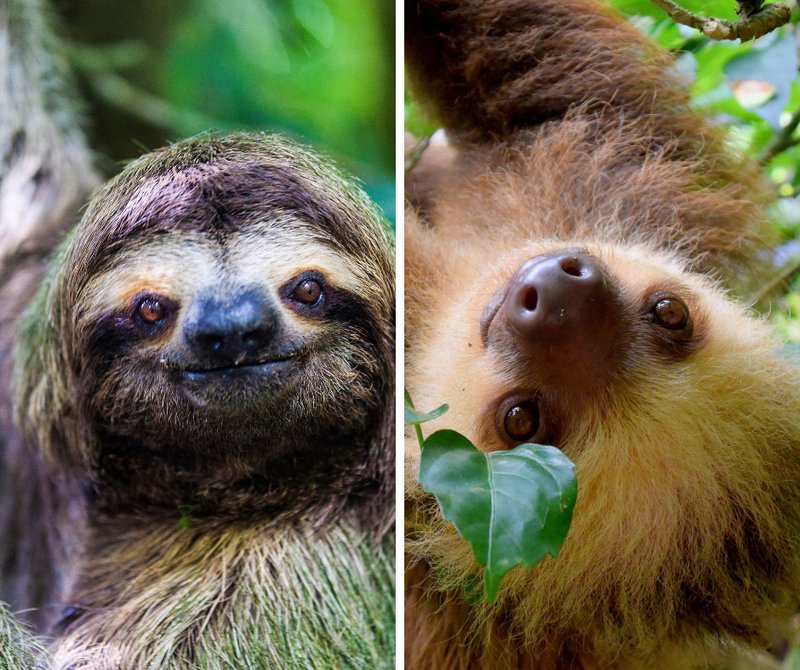
Imagine a sloth in its jungle home, moving ever so slowly like a leaf drifting in the breeze. Despite their leisurely pace, studies show that these creatures have developed unique cognitive abilities that help them survive in the wild. So, grab your favorite coffee, and let’s dive into the world of two-toed sloths and explore just how smart they really are.
Understanding Sloth Intelligence
You might wonder what it means to be intelligent, especially when we’re talking about two-toed sloths. Intelligence can be tricky to define, especially in animals that don’t necessarily show it in the same ways we do. Unlike dolphins or chimpanzees, sloths haven’t been known for impressive problem-solving skills or tool use. However, their cleverness lies in how they adapt to their environment.
Two-toed sloths have evolved over millions of years to survive in the treetops of Central and South America. They’re built for a specific lifestyle that doesn’t demand speed or the ability to solve complex puzzles. Instead, their intelligence is notable in their survival skills, such as their slow movements, which help them avoid predators. Being slow can be a smart strategy when you live in a world full of fast-moving threats!
These sloths also have a keen ability to navigate their forest home. Their slow lifestyle doesn’t mean they lack awareness. In fact, they can remember the locations of food sources and distinguish between different plant types, which is crucial for their diet of leaves.
What Makes Two-Toed Sloths Unique?
Two-toed sloths, or Choloepus, are fascinating not just because of their behavior but also due to their unique biology. They have a slower metabolism than many animals, which allows them to conserve energy and survive on their leaf-based diet. Their digestive systems are adapted to break down tough plant materials, showcasing their ability to thrive where other animals might struggle.
Another unique aspect is their social behavior. While these animals are often solitary, they do have social interactions during mating seasons. They grunt and communicate with each other, using vocalizations to express their needs and feelings. This shows that even though they might appear sluggish, there’s more going on beneath the surface.
Their fur even plays a role in their intelligence. It provides a habitat for algae, which offers camouflage in the tree canopies. This clever adaptation reflects their ability to blend into their surroundings and avoid predators. It’s like wearing a natural disguise!
How Sloths Learn and Adapt
You might be curious about how two-toed sloths learn in the wild. Learning often takes on different forms for them. Sloths rely heavily on their mothers during their early days to teach them vital survival skills. This critical learning phase helps young sloths develop their unique abilities, especially when it comes to identifying safe food sources.
Imitation plays a significant role in their learning process as well. Young sloths observe their mothers and other sloths to understand safe feeding habits and tree navigation. This form of learning demonstrates that sloths have the ability to adapt to their surroundings, even if they’re not the quickest animals on the block.
Plus, their long lifespan of around 20 years gives them plenty of time to gather experiences. As they age, they can adjust their behaviors based on what they’ve learned, which is a sign of cognitive flexibility.
Sloth Behavior in the Wild
Behavior is a window into understanding sloth intelligence. Two-toed sloths exhibit some fascinating habits that help them thrive in their habitats. For one, they are nocturnal creatures, meaning they’re most active at night. This behavior helps them avoid daytime predators and conserve energy when it’s hotter outside.
Their sleep schedule is another interesting aspect. Sloths can sleep for up to 20 hours a day! While that might seem excessive, it’s a key part of their survival strategy. Sleeping a lot helps them conserve energy, which is especially important given their slow metabolism.
When it comes to interactions with other animals, sloths have unique symbiotic relationships. For instance, they often have a host of insects and algae living in their fur, which offers them protection and camouflage. This clever use of their bodies shows a kind of environmental intelligence that’s often overlooked.
Sloths and Problem-Solving Skills
Now, let’s touch on the idea of problem-solving. You might think that a sloth’s leisurely pace means they don’t engage in complex problem-solving like a crow or a monkey. But here’s the thing—sloths have their own way of approaching challenges.
For example, when navigating through trees, sloths must figure out the best routes to avoid dangers and find food. They often rely on a combination of instinct and learned behavior. Their experience helps them choose the safest branches and leaves. So, even though they don’t solve puzzles, the way they handle their environment is a form of intelligence in its own right.
Research has also shown that sloths can adapt their behavior based on past experiences. If they encounter a negative situation, like a predator, they learn to avoid that area in the future. This ability to remember and adjust their behavior is a testament to their cognitive skills.
The Role of Conservation in Their Future
Understanding the intelligence of two-toed sloths is crucial for conservation efforts. As deforestation and climate change impact their habitats, it’s essential to recognize how these animals navigate their environments. Their unique behaviors and skills highlight their role in the ecosystem and underscore the importance of maintaining their natural habitats.
Conservationists focus on protecting the rainforest areas where sloths thrive. By preserving these environments, we not only safeguard the sloths but also promote biodiversity. Sloths contribute to the health of their ecosystem through seed dispersal and the maintenance of plant life.
When we think about sloth intelligence, it’s essential to consider how their survival skills interact with conservation. Protecting their habitats can help ensure their continued existence, allowing future generations to learn about these incredible creatures.
In many ways, two-toed sloths are a gentle reminder that intelligence comes in various forms. Their slow, deliberate movements and unique adaptations reveal a world of cleverness that isn’t always visible. From their survival tactics to their learned behaviors, sloths show that being smart doesn’t have to mean being fast or flashy.
So, the next time you see a sloth hanging out in a tree, take a moment to appreciate the depth of their intelligence. They may not be the fastest or most vocal animals, but their clever survival strategies and unique behaviors are fascinating in their own right. Two-toed sloths may not be racing to solve puzzles, but they’ve certainly mastered the art of thriving in the canopy, one slow step at a time.

